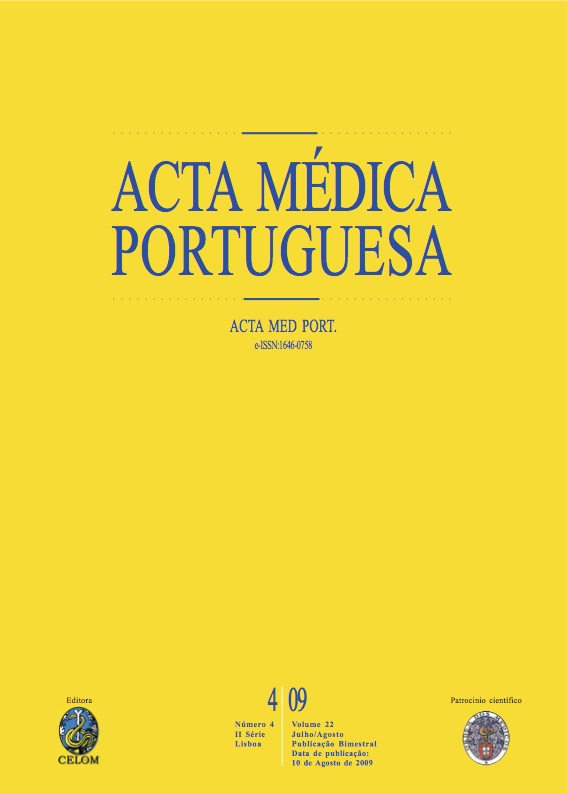Estado actual e evolução da epidemia tabágica em Portugal e na Europa.
DOI:
https://doi.org/10.20344/amp.1708Resumo
Tobacco smoking is the cause of more than half million deaths/year in the European Union (EU). Monitoring smoking prevalence is an important tool to evaluate the epidemic and its evolution and to assess the effectiveness of preventive measures. The comparison between countries may help us identify good control practices.To describe the current state and evolution of the smoking epidemic in several EU countries, and to characterize the Portuguese situation in comparison with those countries.To characterize smoking habits and their evolution in the population over 15 years old, several Eurobarometer reports from 1995 to 2007 were used. The characterization of School Aged Children's smoking habits was based on the Health Behaviour in School-Aged Children data of 1993-4 and 2002. The Portuguese situation also used the information available from the National Health Surveys of 1987 up to 2005/06.The global prevalence of smoking in adult population in most of the European countries is over 25%. The average prevalence of male and female smokers in School-Aged Children over 15 years of age is approximately 18% if we consider both genders together. In most countries the prevalence of tobacco consumption is higher in girls when compared to boys. In Portugal, the prevalence in the population over 15 years of age has one of the lowest values among European countries (30,6 % for men and 11,6% for women). Despite these crude prevalence rates, high age-sex-specific prevalence rates were found in age groups 25-34 and 35-44 in men (39,9% e 44,6% respectively) and in women (17,6 e 21,2% respectively). In 2002, at the age of 15, the percentage of daily smoking girls in Portugal was 19.5%. This value reveals that Portugal is among the countries with higher prevalence rates of smoking among adolescent girls. Over the last decade (1996-2006), a decrease in tobacco consumption has been observed in most EU countries, both in adult population and in School-Aged Children. In Portugal, this consumption has levelled off in adult men and in youngsters aged 15, but shows a significant increase in female adults and school-aged girls.Although Portugal presents low global prevalence rates in the European context, the substantial increases observed in the young adult female population are of particular concern because of its impact on women's health and the risk of pre and post-natal associated childhood exposure. These results reveal that current preventive strategies in Portugal are ineffective in reducing smoking prevalence among children and young adults.Downloads
Downloads
Como Citar
Edição
Secção
Licença
Todos os artigos publicados na AMP são de acesso aberto e cumprem os requisitos das agências de financiamento ou instituições académicas. Relativamente à utilização por terceiros a AMP rege-se pelos termos da licença Creative Commons ‘Atribuição – Uso Não-Comercial – (CC-BY-NC)’.
É da responsabilidade do autor obter permissão para reproduzir figuras, tabelas, etc., de outras publicações. Após a aceitação de um artigo, os autores serão convidados a preencher uma “Declaração de Responsabilidade Autoral e Partilha de Direitos de Autor “(http://www.actamedicaportuguesa.com/info/AMP-NormasPublicacao.pdf) e a “Declaração de Potenciais Conflitos de Interesse” (http://www.icmje.org/conflicts-of-interest) do ICMJE. Será enviado um e-mail ao autor correspondente, confirmando a receção do manuscrito.
Após a publicação, os autores ficam autorizados a disponibilizar os seus artigos em repositórios das suas instituições de origem, desde que mencionem sempre onde foram publicados e de acordo com a licença Creative Commons









